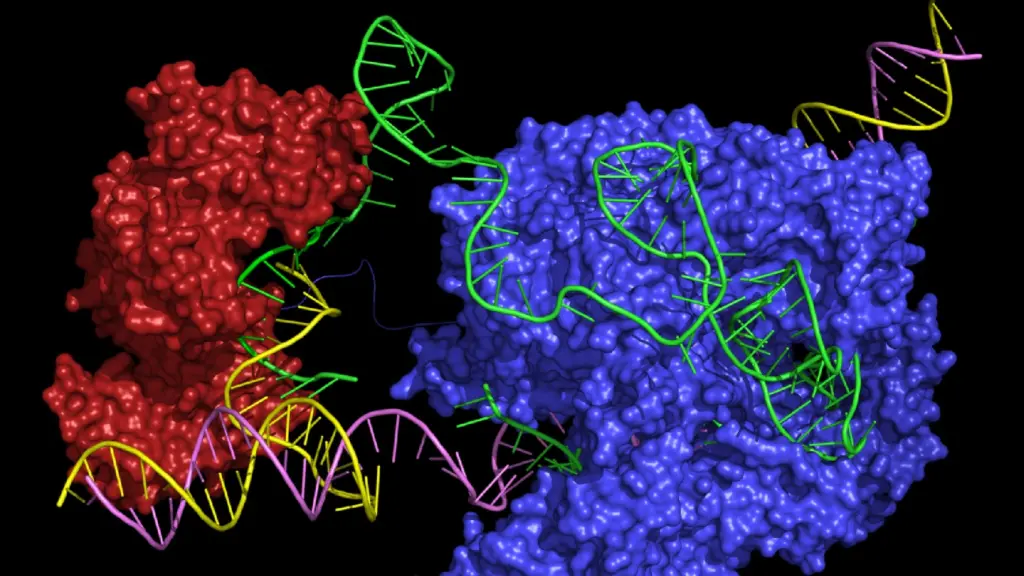The CRISPR field is moving fast! Don’t worry, we’ve got you covered. Check in every week for a quick summary of the biggest news and developments in genome engineering research so you can stay up to date with what’s happening in the world of CRISPR.
This week we bring you news from researchers at Columbia University, who this week published a new paper in the journal Ophthalmology, the official journal of the American Academy of Ophthalmology, describing results from a study that used CRISPR to treat a vision disorder called retinitis pigmentosa (RP) in mice.
Using CRISPR to Perform Genome Surgery
The study, led by Dr. Stephen H. Tsang. reports on so-called “genome surgery” for the treatment of autosomal dominant retinitis pigmentosa, which is a group of inherited degenerative genetic disorders that involve a breakdown and loss of cells in the retina. The retina is the light-sensitive tissue that lines the back of the eye, and patients with RP often have issues with vision.
Retinitis pigmentosa can be caused by mutations in one of more than 50 genes. The most common causes of RP are mutations in the Rho gene, which provides instructions for making the rhodopsin protein. Rhodopsin is the biological pigment found in the cells of the retina, ‘bleaching’ in response to light and therefore enabling vision in low-light conditions. Patients with retinitis pigmentosa commonly have difficulty seeing at night, and can experience the loss of peripheral vision. There is currently no cure for the condition, and it is estimated to affect approximately 1 in every 4,000 people worldwide.
This new research sought to create a more agile version of CRISPR that would overcome the genetic variation seen in retinitis pigmentosa patients. Ultimately, the team wanted to produce a potential therapy that could be used more widely, compatible with treating more patients regardless of their individual genetic profile.
The team came up with an “ablate-and-replace” strategy that involved gene therapy using dual adeno-associated viruses that knock out expression of the endogenous Rho gene in a mutation-independent matter via CRISPR-based gene deletion, and enable the expression of wild type protein via exogenous cDNA. Tsang’s team also used two guide RNAs instead of one, which increased the knockout of the defective gene.
Their results provide a proof of concept for the ablate-and-replace strategy, and Dr. Tsang has estimated that human trials will begin within the next three years.
“Genome surgery is coming,” Dr. Tsang said in a press release. “Ophthalmology will be the first to see genome surgery before the rest of medicine.”
What Comes Next CRISPR-based Vision Treatment?
A press release from the American Academy of Ophthalmology states that “this is the first time that researchers have successfully applied CRISPR technology to a type of inherited disease known as a dominant disorder,” and suggests that these promising results may also provide hope for curing hundreds of other genetic diseases including Huntington’s disease and Marfan syndrome.
Interestingly, researchers from the Roski Eye Institute at University of Southern California also released study results at the recent 2018 meeting of the Association for Research in Vision and Ophthalmology (ARVO) in Honolulu, Hawaii (April 29th-May 3rd), showing that they were able to successfully disrupt the Rho gene in vitro in human HEK293 cells. The field of ophthalmology is clearly buzzing with potential for CRISPR!
More CRISPR in the News…
In CRISPR Companies: Beam Therapeutics Founded by Gene Editing Pioneers to Create Precision Genetic Medicines with Base Editing.
A new genetic engineering company, Beam Therapeutics, launched this week. The company, co-founded by scientific pioneers David R. Liu, Feng Zhang, and J. Keith Joung, will use base editing technology that builds on CRISPR to enable single-letter editing of DNA and RNA. Beam is staying quiet on which diseases its first targets will tackle, but reports suggest that the company is actively working on more than ten potential targets.
In Drug Resistance: Genome-wide and High-density CRISPR-Cas9 Screens Identify Point Mutations in PARP1 Causing PARP Inhibitor Resistance.
Research from an international team with scientists in the UK, Bulgaria, and the US suggests that resistance to PARP inhibitor drugs can be caused by mutations in the enzyme-coding gene PARP1. The researchers used CRISPR-Cas9-based mutagenesis to uncover and characterize alterations that fuel resistance to the PARP inhibitor, Talazoparib – a drug used for the treatment of advanced breast cancer in patients with germline BRCA mutations.
In Books: She Has Her Mother’s Laugh: The Powers, Perversions, and Potential of Heredity by Carl Zimmer.
Carl Zimmer’s latest release hits the shelves on May 29th, and it delves deep into the concept of genetics and heredity. Zimmer threads together multiple narratives, encompassing the early work of Gregor Mendel, the horrors of eugenics, and of course – CRISPR-Cas9 technology. He demonstrates how advancing our knowledge of genetics continues to shape society, and speculates on what may come next.
Cell Engineering 101
CRISPR has ignited a revolution. Although it’s a relatively recent discovery in the history of biotechnology, CRISPR has quickly become a standard laboratory tool and cell engineering is transforming research. One of the most widely used applications of CRISPR is knocking out specific genes in cell lines to interrogate gene function.

CRISPR 101 eBook
CRISPR has quickly become a standard laboratory tool for gene editing. As the adoption of CRISPR accelerates worldwide, up-to-date knowledge of the basics of CRISPR is essential for anyone in the field. From target identification studies to the recent breakthroughs in clinical trials, CRISPR is enabling scientists to unlock the power of the genome.
Download our CRISPR 101 eBook today to stay up to date on all your CRISPR basics and get the best results in your CRISPR experiments!








